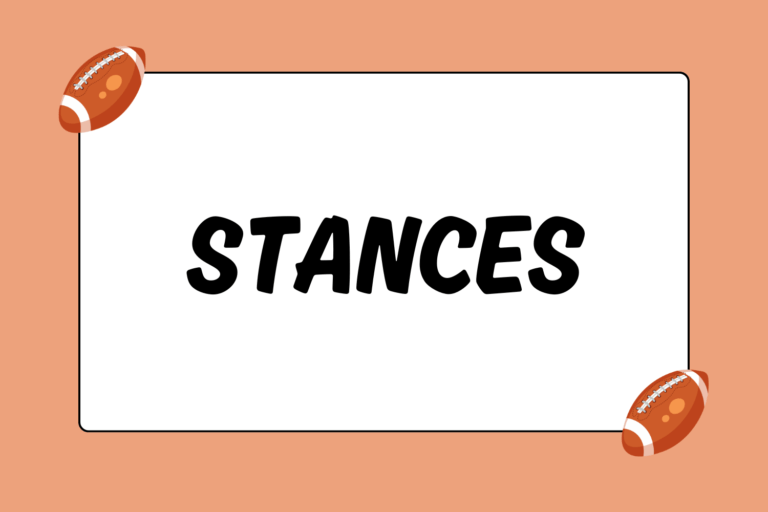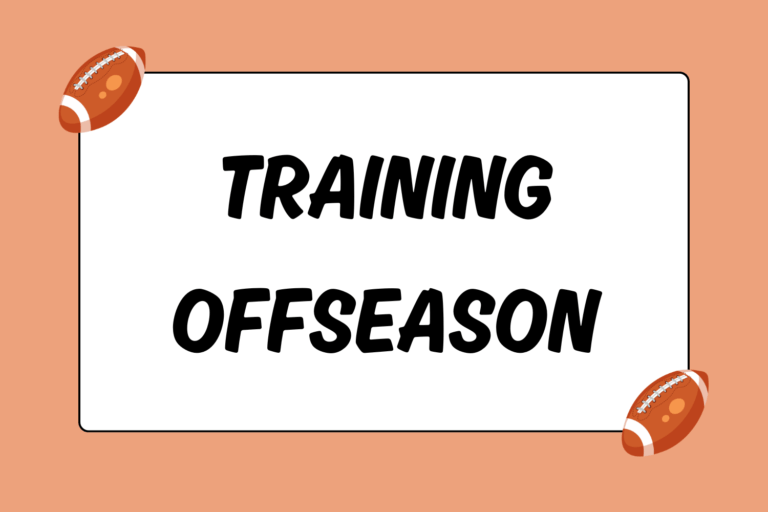Put very lightly, football is a physical game that’s at the high end of the contact sports spectrum. Many people go so far as to differentiate football from other contact sports, calling it a ‘collision’ sport instead. True, a collision is a type of contact, but with the way most football players come into contact with each other, collision is a better choice of words.
The most important type of collision in the game? The tackle. There are several different phases involved in properly executing a tackle, starting with proper positioning.
Pre-Contact Positioning
If you get into the habit of properly aligning yourself before a tackle is attempted, your ability to execute a tackle will improve; and the better a tackler you are, the greater the chance you’ll have at delivering a game-changing hit.
Determine the Angle of Pursuit
Your position in relation to the ball carrier’s position will decide the best angle/direction from which to approach the ball carrier. There are two big determining factors in figuring out the proper angle of pursuit:
- The ball carrier’s speed
- The distance between you and the ball carrier
If the ball carrier is right in front of you, then your immediate reaction would likely be to run straight ahead and tackle him. This instinct is understandable – and depending on how far away the ball carrier is, it’s a smart one to follow. However, there’s a big difference between a ball carrier being two yards away, and ball carrier who is 10 yards away.
Close the Gap
Less distance between the defender and the ball carrier means less room for the ball carrier to move. However, if the ball carrier is noticeably faster than the defender coming up to make the tackle — like in the case of a defensive lineman and a running back — the angle may need to be widened a bit to ensure the ball carrier doesn’t evade the tackle.
The goal is to keep yourself between the ball carrier and your end zone. A wider angle of pursuit means more time elapses before you get to the ball carrier, but you’ll still end up in front of him and in the right place to make a tackle.
Gathering Strength
Just before you establish contact, you need to put your body in the proper stance, called the ‘breakdown.’ This is designed to do three things:
- Lower the tackler’s center of gravity
- Coil the tackler’s body to explode through the ball carrier
- Deliver a hit into a specific area of the ball carrier’s body
All of these actions make it much easier to bring the ball carrier to the ground. The breakdown should occur just before the tackler makes contact with the ball carrier.
Hot Tip: The Breakdown
The term breakdown refers to how players should change their stance immediately before contacting the ball carrier, so that your momentum will be concentrated and delivered in such a way that the ball carrier will have a hard time staying up.
Center of Gravity
If a defender attempts to tackle the ball carrier while standing up straight, that would-be tackler likely will bounce right off him. The reason for the failed tackle is physics, as the tackler’s center of gravity was too high, and his momentum too dispersed to make an effective tackle.
Here’s how the center of gravity gets lowered:
- Just before contact is made, the tackler should bend at the knees and drop the hips, making sure the feet are at least shoulder-width apart (or slightly wider than the shoulders).
- The upper body should be angled slightly forward so the lead shoulder (explained later) can be planted into the ball carrier.
Lowering the center of gravity makes the mass of the tackler’s body more stable, and gives the tackler better balance. Think of it as if trying to lay a book flat on its front cover: If the book is standing up on its end, a near-effortless push would do the trick. If the book is laid on its back cover, however, it would take a much more forceful flip. The same applies with football players.
Concentrating Momentum
Because the tackler is already running, he has built up some momentum. It’s much easier to tackle the ball carrier when the tackler uses that momentum to his advantage. Remember to…
- Keep the feet moving. It’s easy to stop moving the feet when the breakdown starts, but such a move is counterproductive, as it immediately erases all the momentum that has been built up.
- With the arms at the side of the body, draw them backwards and hold them there until the moment of contact. At that exact moment, swing them forward. This adds even more momentum to your tackle.
By concentrating your momentum prior to making a hit, you effectively channel all the force of your body into a small area. When that force is unleashed, the ball carrier will have to absorb it all in a small area, affecting his own momentum and balance.
Hot Tip: Don’t be Fooled
When preparing to make a tackle, don’t watch anything but the waist/midsection area of the ball carrier. That area of the ball carrier’s body will tell you where they’re headed, while other areas (head, feet) can be deceiving.
Establishing Contact
The proper angle of pursuit gets you to the right place, and the breakdown sets you up to deliver a hard, effective hit on the ball carrier. Time to make sure all that effort actually results in tackling the ball carrier.
Deliver the Hit
Hitting the ball carrier in the proper way will ensure that all the tackler’s momentum gets used effectively. It will also make it easier to finish the tackle.
From the breakdown, the tackler should step forward and drive the inside (or lead) shoulder into the ball carrier around the midsection/thigh area, while swinging the arms up and wrapping them around the ball carrier’s body. At the moment of contact, the tackler should put his face mask directly into the ball. This ensures that the body is completely across the ball, and can help knock the ball loose with the initial hit.
That explanation packs a lot of movement into a very short window of time. So here’s a more thorough breakdown:
Drive the Inside Shoulder into the Ball Carrier
The inside shoulder is whichever shoulder will end up putting the tackler in front of, and not behind, the ball carrier during a tackle. By planting the shoulder in the midsection/thigh area, the tackler will hit below the ball carrier’s center of gravity, meaning the ball carrier will be knocked off balance.
Put the Face Mask on the Ball
This actually works to accomplish two goals:
- It forces the tackler to keep her head up when going into a tackle, which is crucial to preventing neck injuries.
- It helps the tackler position his body across the ball carrier’s body, which gives the tackler more control over the ball carrier; and occasionally, it results in forcing a fumble, which is always desirable on defense.
Even if the face mask isn’t exactly on the ball, as long as it’s in that general area it will still be easy for the tacker to maintain control of the ball carrier.
Swing the Arms Up and Wrap
By swinging the arms up, the tackler can concentrate his momentum into both pushing back and lifting the ball carrier off the ground. The lifting aspect in particular is really useful in knocking the ball carrier off balance. To solidify control over the ball carrier, the tackler’s arms should wrap around those of the ball carrier, further restricting his movement.
Finishing the Tackle
After contact is made, the tackler should drive through the ball carrier until he is taken to the ground, officially marking the end of the tackle and the play.
The ease of taking down a ball carrier depends directly on the effort that was put into the previous steps. Naturally, the more effort that was put in before, the easier it will be to take the ball carrier to the ground. The crucial element to finishing a tackle is the drive. Driving through a hit and wrapping not only continues the momentum built by the tackler, it also kills the ball carrier’s momentum and ability to resist going to the ground.
The worst thing the tackler can do at this point (short of actually letting go of the ball carrier) is stop moving the feet. This would kill the momentum of the tackle and allow the ball carrier to regain his balance, making the job of tackling the ball carrier tremendously harder.
The Key to Tackling Success
A truly effective tackle will include a smooth, fluid transition of all the steps:
- The pursuit
- The breakdown
- The hit
- The wrap The drive
- The finish into the ground
The faster the tackler can progress through these phases, the easier it will be to consistently and effectively make great tackles.





